Airworthiness gems, freely available to all. Send me an email if you’d like a copy of any of these presentations.
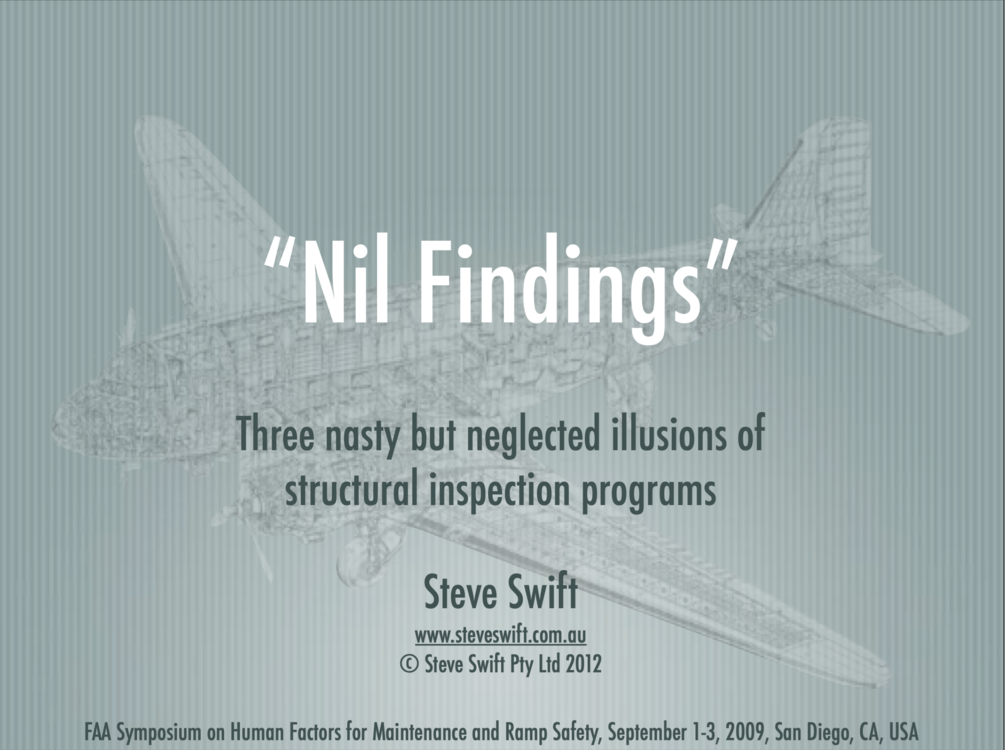
A presentation on three nasty but neglected illusions of structural inspection programs. Highlights the need for doers and designers of maintenance to work together. Presented at the FAA Symposium on Human Factors for Maintenance and Ramp Safety, September 2009, San Diego, CA, USA.
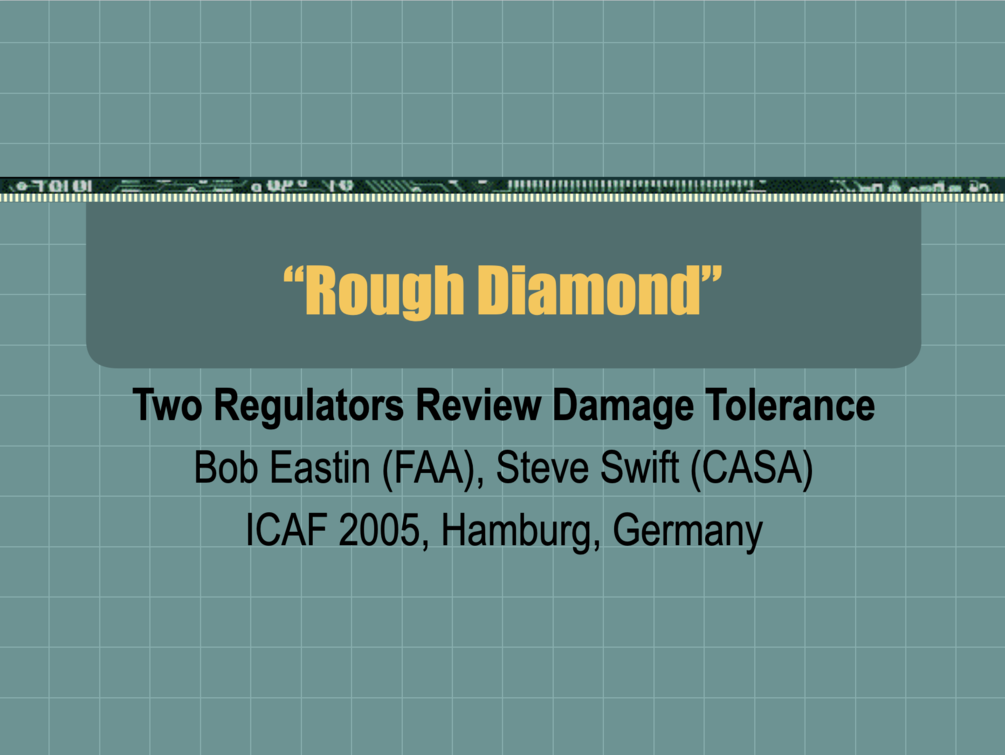
Reviews whether ‘damage tolerance’ is delivering the safety envisioned when it became the preferred fatigue management method for large civil airliners. The classic I wrote with Bob Eastin from the United States Federal Aviation Administration. Presented at the 23rd Symposium of the International Committee on Aeronautical Fatigue, Hamburg, Germany, June 2005.
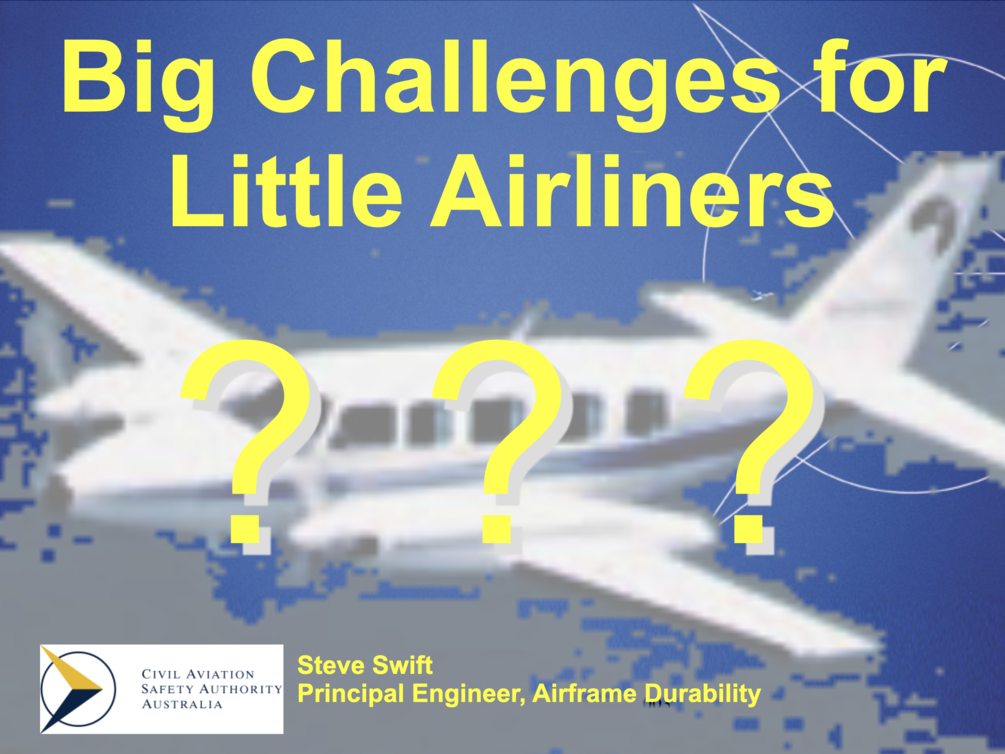
This paper looks at several challenges facing the structural safety of little airliners in Australia. Considers solutions for type certificate holders, modifiers, repairers and maintenance programs. Presented at the 10th Australian International Aerospace Congress, Brisbane, Australia, July 2003.

Reviews thirty years of regulating structural fatigue in light aircraft from an Australian perspective, including the history and effectiveness of FAR 23.572. Suggests improvements. Presented at the 20th Symposium of the International Committee on Aeronautical Fatigue, Bellevue, Washington, USA, July 1999. (Photo by Kristian Egelund on Unsplash.)
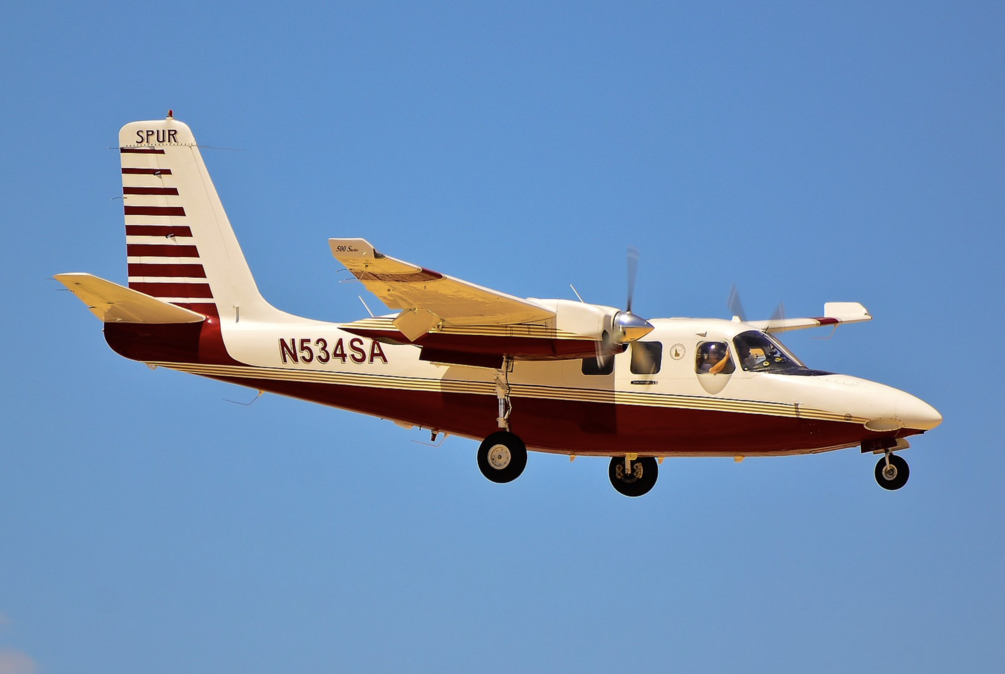
The service history of the Aero Commander light twins teaches a hard lesson in the theory and practice of fatigue control. A classic. Presented at the 18th Symposium of the International Committee on Aeronautical Fatigue, Melbourne, Australia, May 1995. (Photo of Aero Commander 500 by Tomás Del Coro from Las Vegas, Nevada, USA - N534SA 1968 Rockwell International 500-S C/N 1816-22 - Spur Aviation Services Lc, CC BY-SA 2.0, https://commons.wikimedia.org/w/index.php?curid=58210487.)
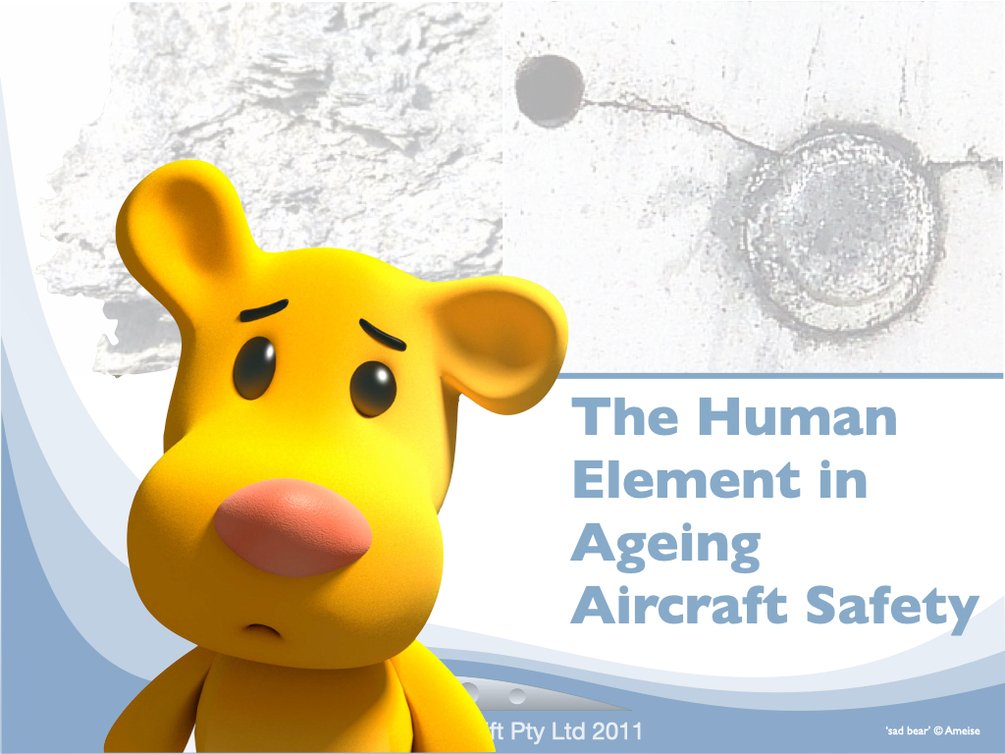
Presented to Safeskies 2011, Canberra, Australia, October 2011. Now that the engineering is mature, the main challenge for ageing aircraft safety is the human element. Discusses clarity, simplicity and trickery.
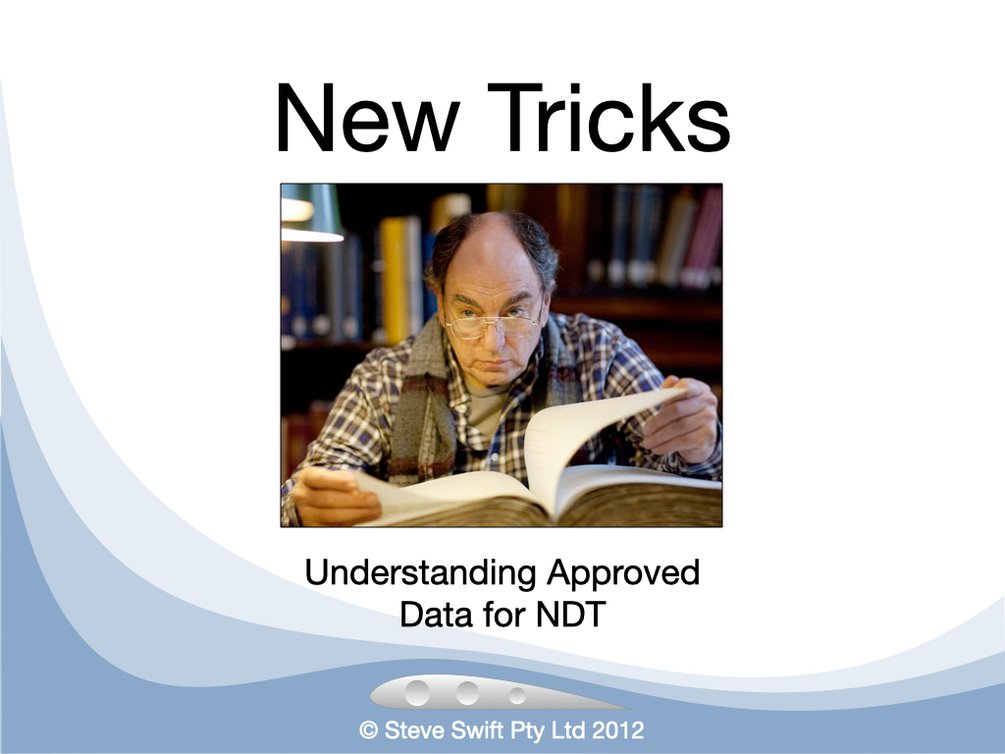
Who can approve maintenance data for non-destructive testing (NDT) under the Civil Aviation Regulations 1988? What is the standard? What ‘new tricks’ could help inspectors work better with – and resist pressure from – aeronautical engineers? Presented at the Quality and Testing in Aircraft Maintenance Seminar, Sydney, November 2012.
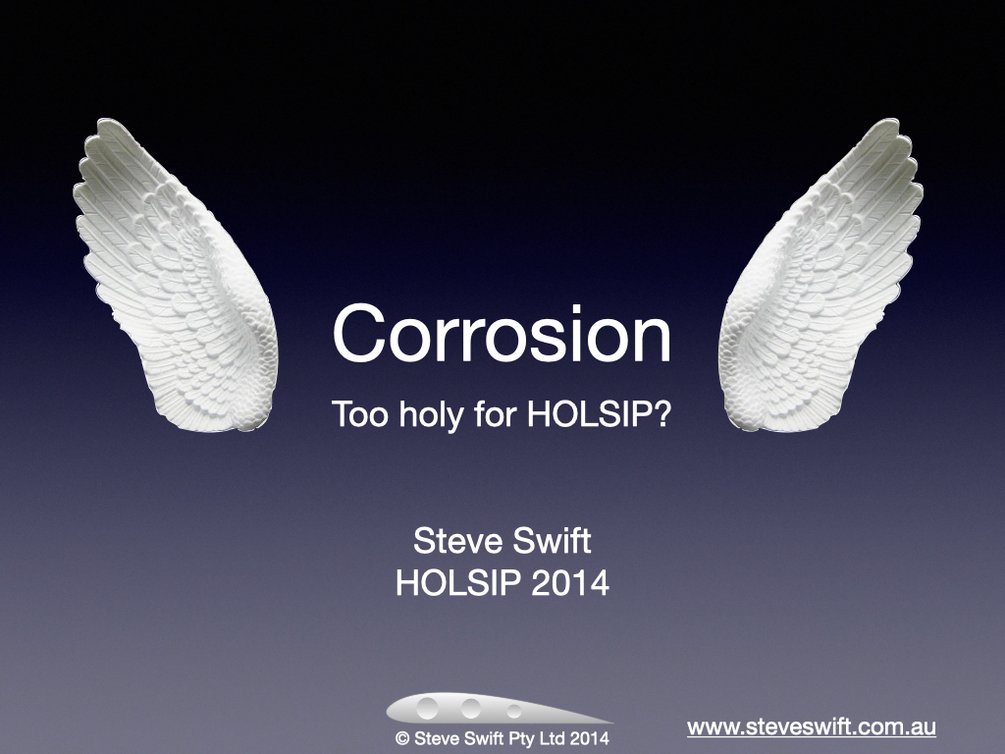
In February 2014, this was the question I asked the HOLSIP (Holistic Structural Integrity Program) Workshop in the USA to discuss on their USAF ASIP Day. If we want more engineers to manage corrosion holistically with other structural integrity threats, such as fatigue, we must first understand why most don’t. Prominent are human factors.
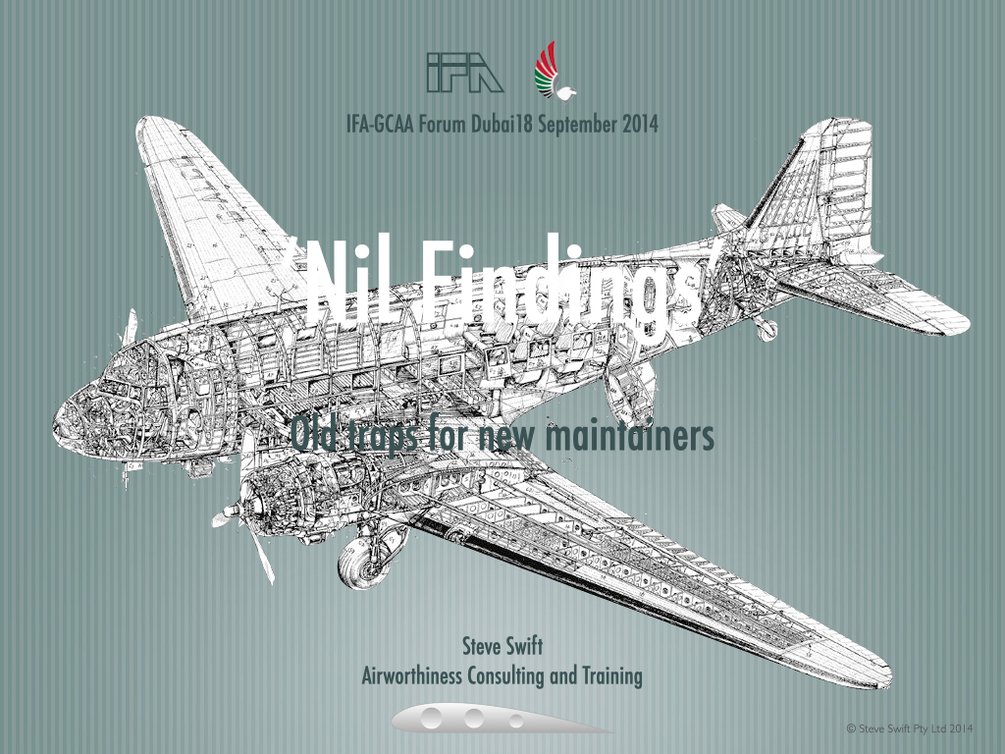
Even new-technology aircraft still need humans for their maintenance. This presentation will introduce you to three ‘illusions’ that can still easily trap maintainers, whether new or experienced. Despite the illusions being enticing, common and dangerous, you rarely hear about them, even in the maintenance human factors fraternity. This presentation is a ‘must’ for anyone who plans or approves maintenance for an airline, maintenance organisation or authority, as well as for those on the tools. Presented at a forum hosted by the International Federation of Airworthiness (IFA) and the General Civil Aviation Authority (GCAA) of the United Arab Emirates, held at the Emirates Engineering Facility, Dubai, from 17-18 September 2014. The forum’s theme was: “Maintaining Airworthiness Standards and Investing in the Most Important Asset, ‘The Human Element’’.
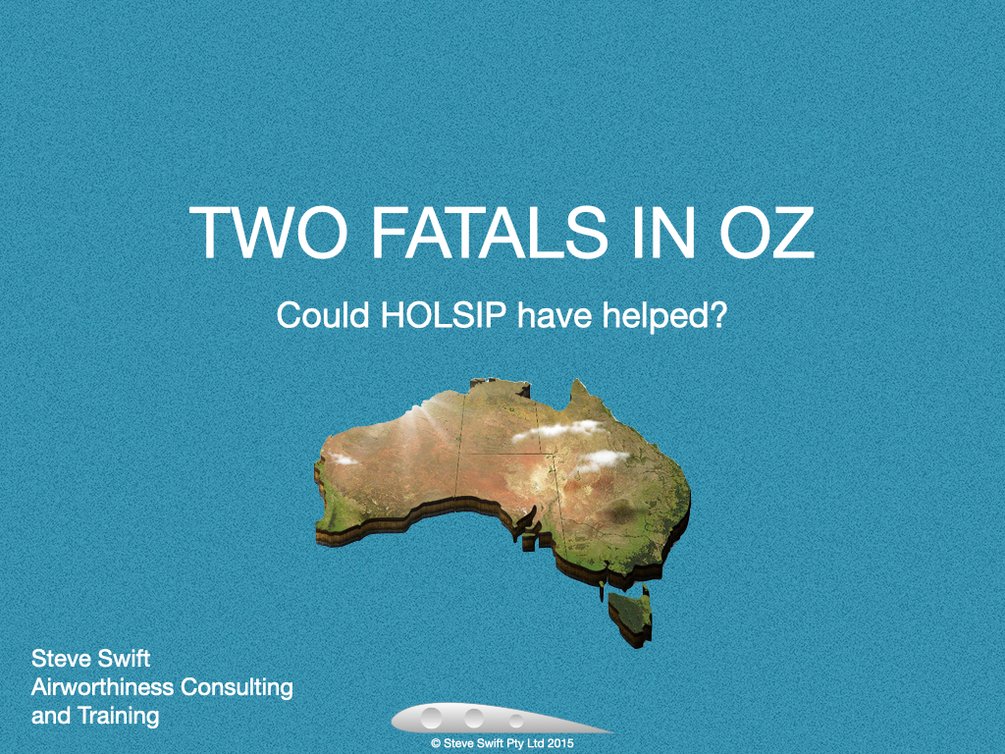
Presented at the 14th International Workshop on the Holistic Structural Integrity Process (HOLSIP), Snowbird UT, USA, 25 February 2015 (USAF ‘ASIP Day’). It looks at two fatal airframe failures in Australia in 2013 and asks if HOLSIP could have helped.
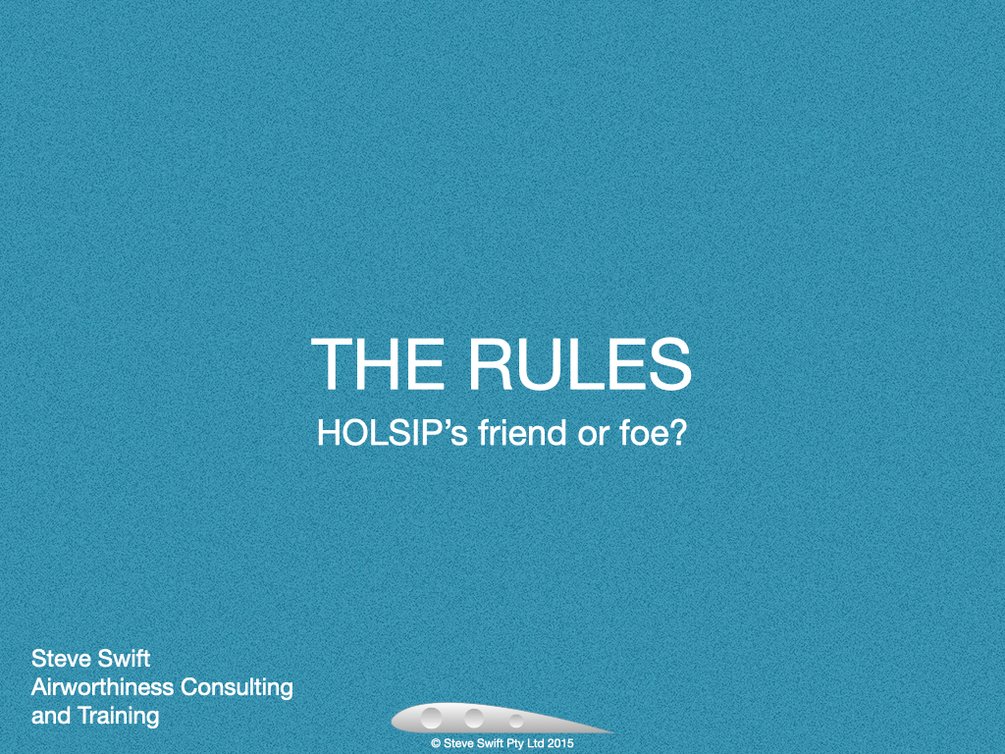
Presented at the 14th International Workshop on the Holistic Structural Integrity Process (HOLSIP), Snowbird UT, USA, 26 February 2015. It looks at the international civil and military airworthiness rules and their importance to improving aviation safety by HOLSIP.
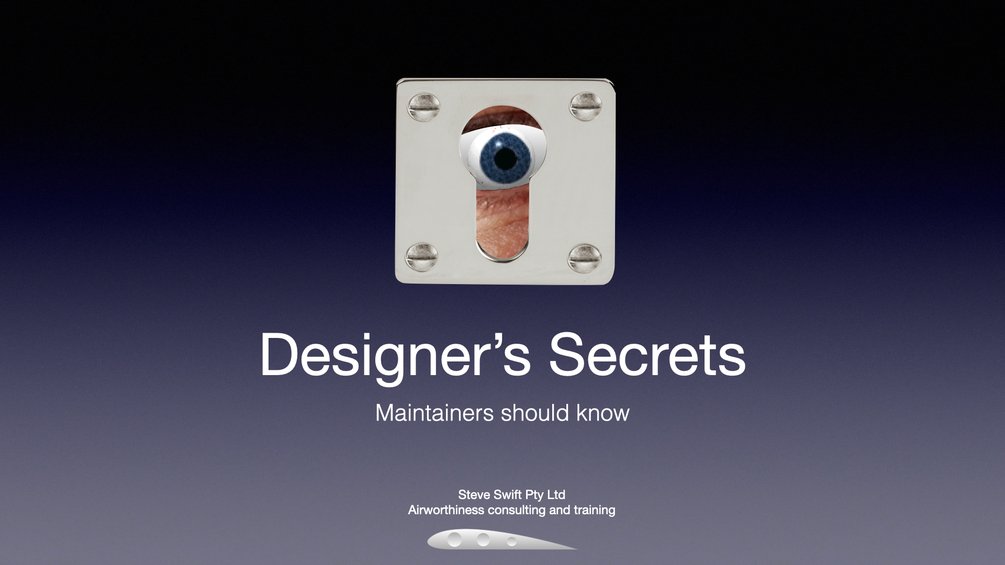
Presented at the Forum of the International Federation of Airworthiness (IFA), Hong Kong, 4 November 2015. Five designer’s secrets to help maintainers improve safety and economy.
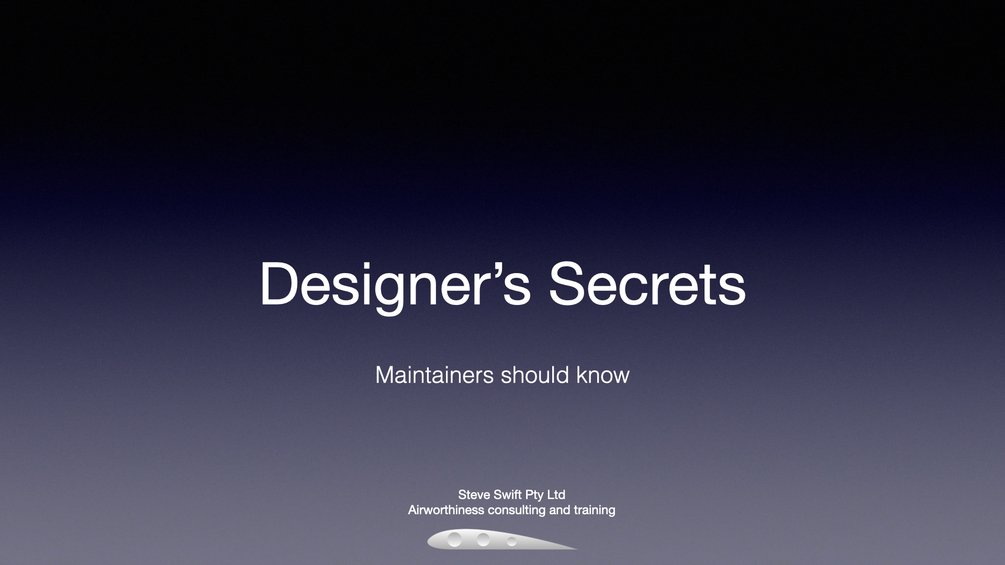
Presented at the 15th Annual Workshop on the Holistic Structural Integrity Process (HOLSIP), Snowbird UT, USA, 24 February 2016. Similar to the presentation below, but for designers instead of maintainers.
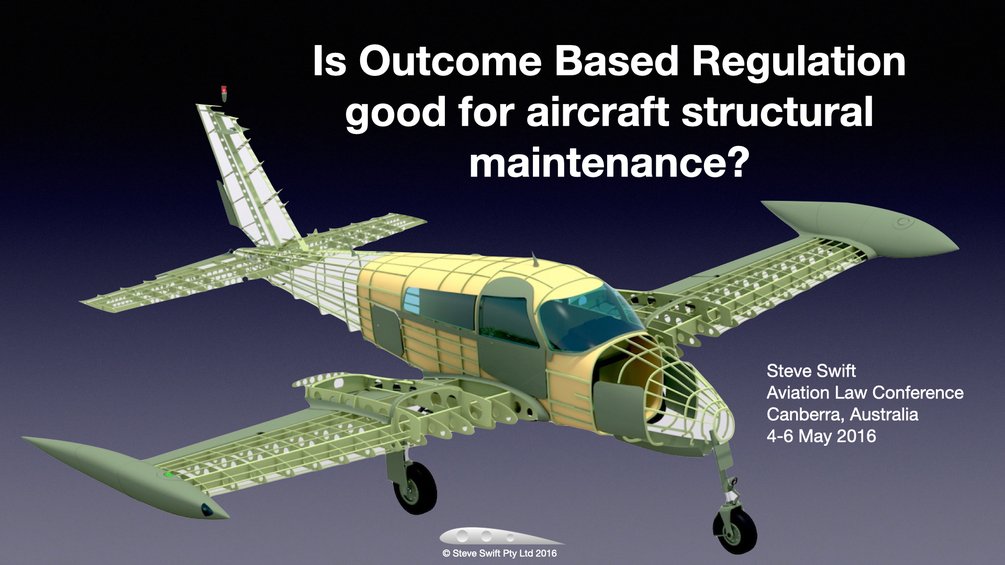
Presented at the Aviation Law Conference, Canberra, Australia, 6 May 2016. The answer to the title’s question depends on whether all parties have the right knowledge. Check out the presentation to learn the ‘right knowledge’ for aircraft structural maintenance. Why do many with important regulatory roles not have it? How could it affect compliance, enforcement and safety? If you are a lawyer, do you need help choosing the right type of ‘engineer’ for your maintenance-related legal matter?
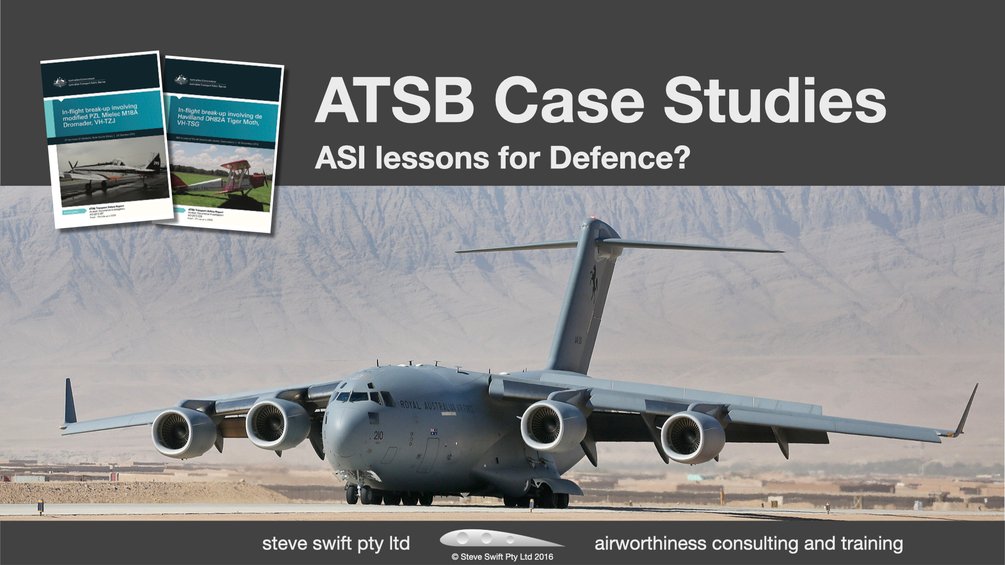
Presented at the Australian Defence Force Aircraft Structural Integrity Symposium on 17 November 2016, at the Defence Science and Technology Group facility at Fishermans Bend, Melbourne, Australia. It is about lessons from reports by the Australian Transport Safety Bureau (ATSB) on two tragic fatal crashes in Australia in 2013. Both involved structural failure caused by metal fatigue.
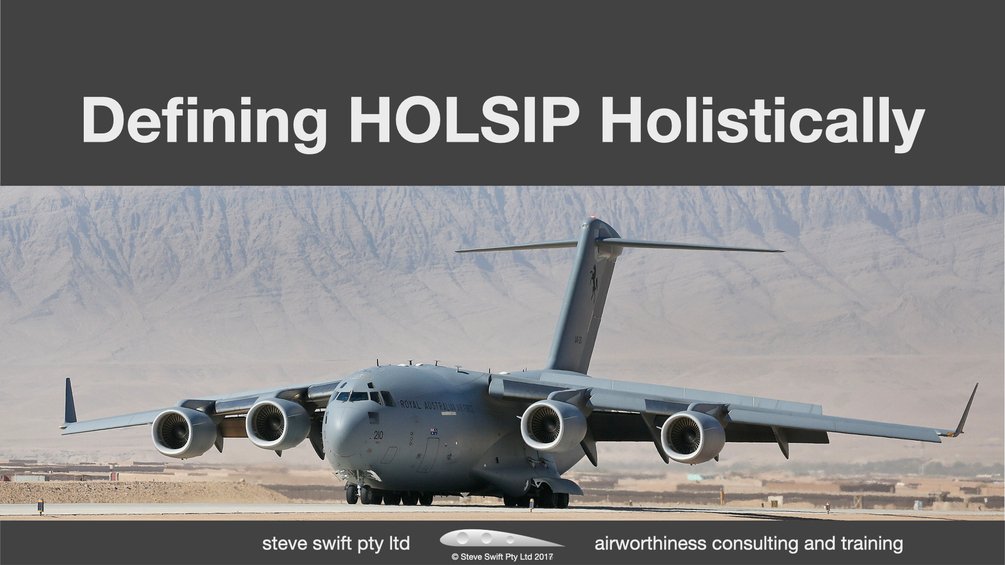
Presented at the 16th Annual Workshop on the Holistic Structural Integrity Process (HOLSIP), Snowbird UT, USA, 6 February 2017. It continues the efforts to define HOLSIP.
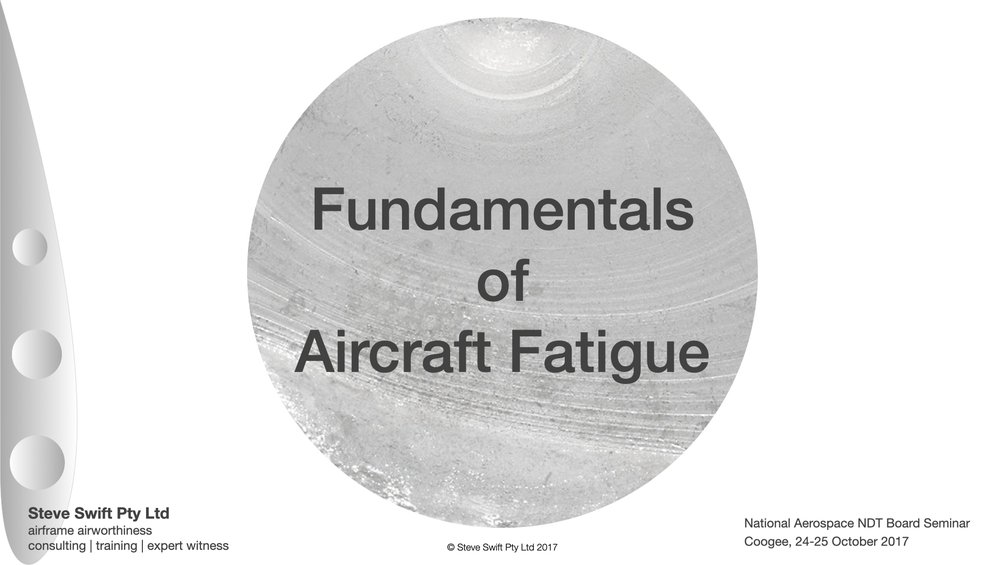
Presented at the Seminar on Aircraft Inspection and Maintenance run by the National Aerospace NDT Board of Australia at Coogee, NSW, on 25 November 2017.

Presented at the annual Forum of the International Federation of Airworthiness (IFA) in Hong Kong on 15 November 2017. It warns of structural maintenance and other hazards that have tripped others.
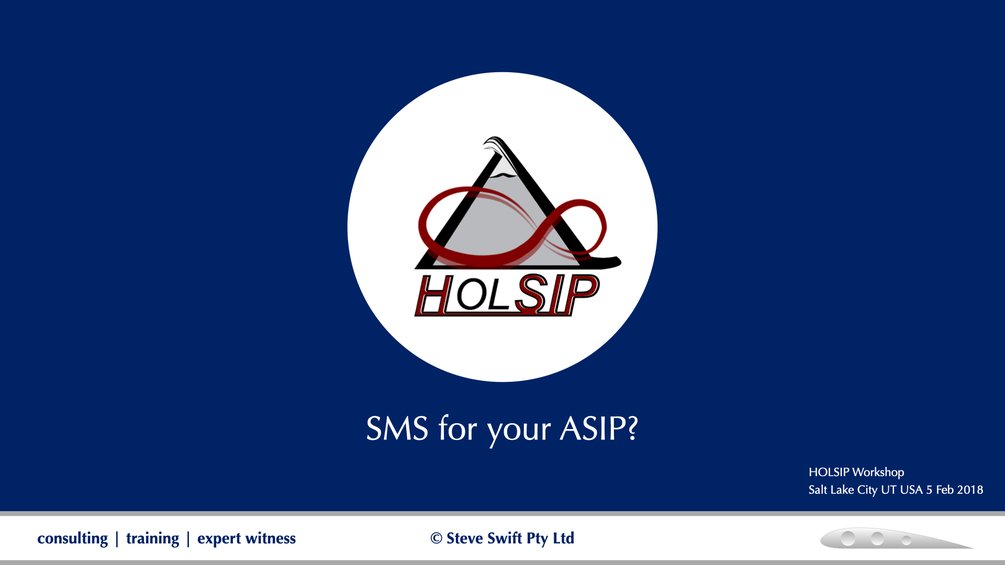
Presented at the 17th Annual Workshop on the Holistic Structural Integrity Process (HOLSIP), Snowbird UT, USA, 5 February 2018. Could Safety Management Systems (SMS) encourage more holistic structural integrity analysis?
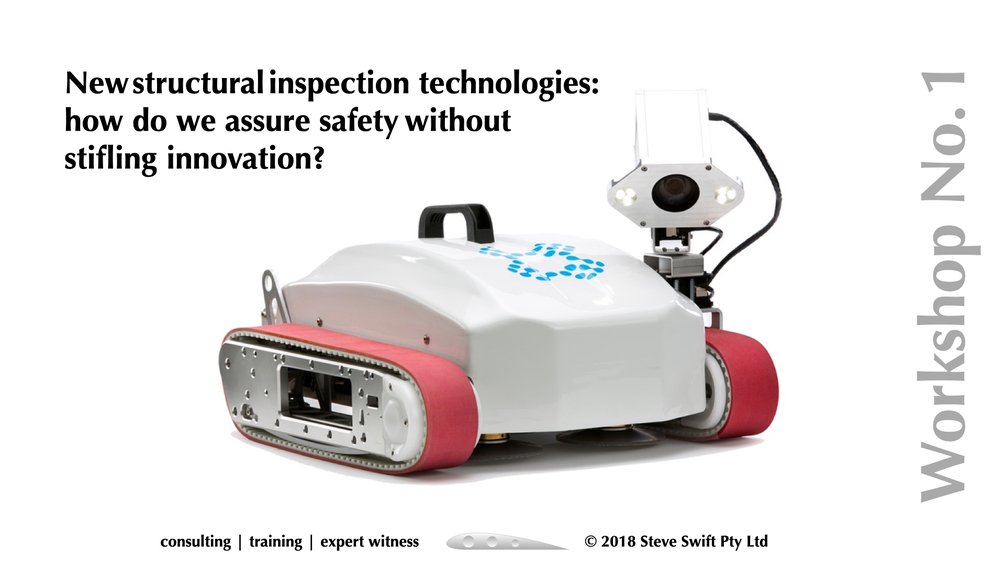
My introduction to a workshop I moderated for the International Federation of Airworthiness (IFA) at Emirates Engineering, Dubai, UAE, 28 November 2018. A panel of regulatory and industry experts discussed the approval of new inspection technologies for aircraft structure, especially camera-equipped robots and drones.
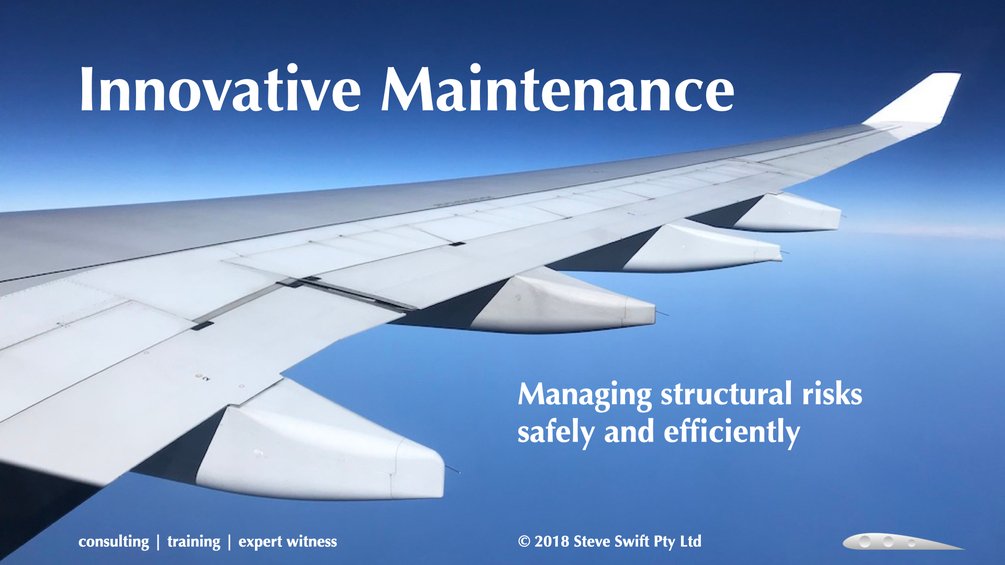
Presented at the IFA’s Conference, ‘Best Practices in Safety Risk Management’, Emirates Engineering, Dubai, UAE, 27 November 2018. Could knowing the basics of ‘damage tolerance analysis’ help you plan your aircraft’s maintenance more safely and efficiently?
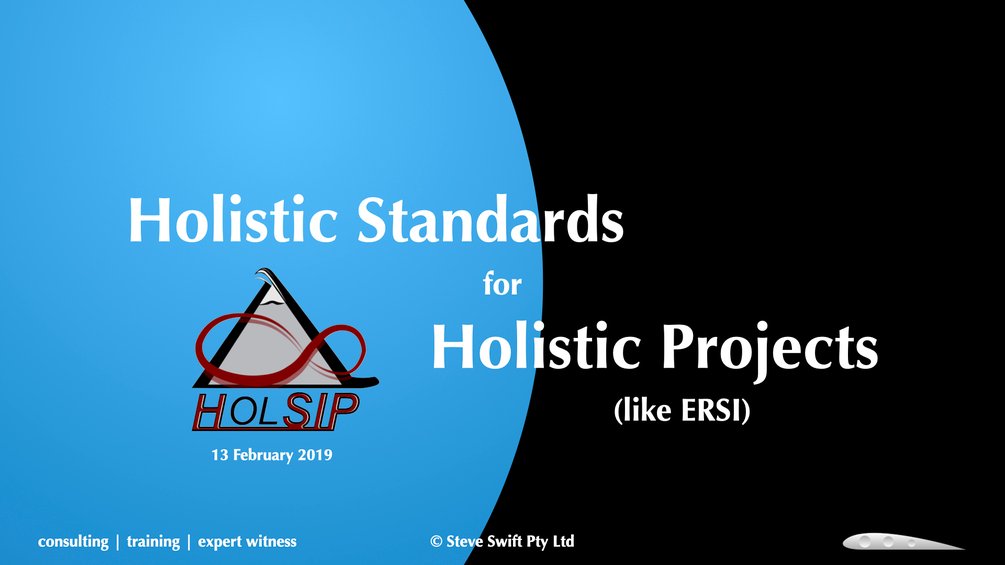
Presented at the 18th Annual Workshop on the Holistic Structural Integrity Process (HOLSIP), Snowbird UT, USA, 13 February 2019.
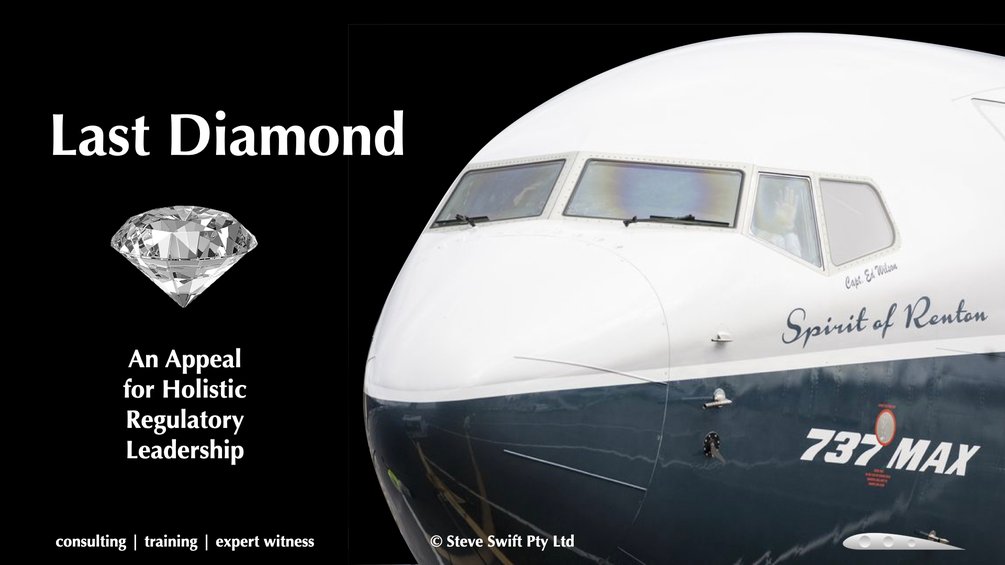
This was the Plantema Memorial Lecture (the keynote address) I presented at the 30th Symposium of the International Committee on Aeronautical Fatigue and Structural Integrity (ICAF), in Kraków, Poland, on 5 June 2019.
